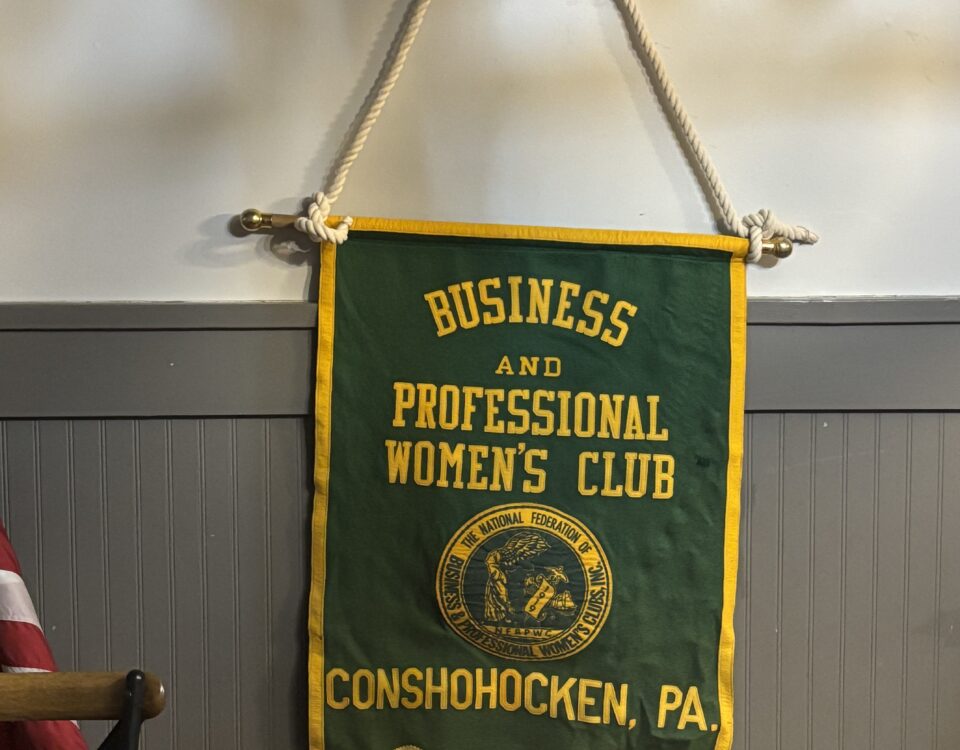
Calling All Conshy Old-Timers
May 9, 2022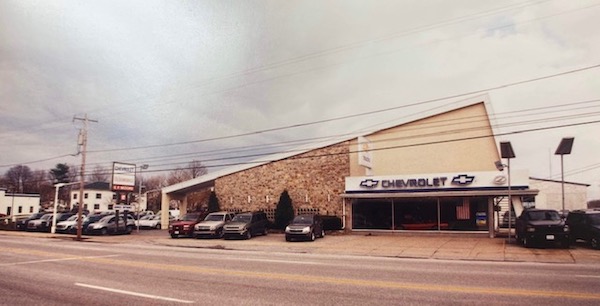
Moore Chevy – Thank You
June 1, 2022History of a House, or Two – Mae Mallen and Gerald Nugent, Have You Ever Heard of Them?

“HISTORY OF A HOUSE, OR TWO”
Mae Mallen and Gerald Nugent
Have You Ever Heard of Them
Well, They owned the Philadelphia Phillies Baseball Club
By Jack Coll
5-15-22
So, this story is a bit lengthy, touching on several subjects, but if you care to read-on I’m sure you’ll find it extremely interesting. It’s a little bit about a “History of a House,” or two, and a prominent Conshohocken resident, Gerald Nugent.
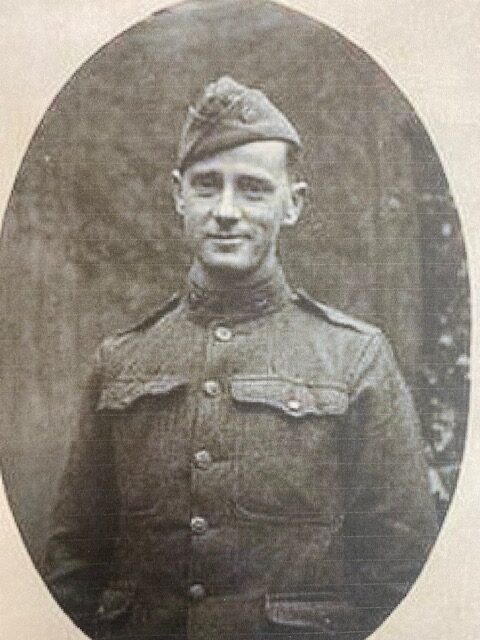
I’ve also written about some very prominent Conshohocken females in the past and Mae Nugent can certainly be added to that list of prominent females.
This article is about baseball, lots of Philadelphia Phillies baseball and we’ll throw in a little drama and suspense pertaining to a potential kidnapping. So, I hope you read-on and by story’s-end I think you’ll say, “Oh-wow.”
The boundaries of Conshohocken are written that the borough includes the area from the foot of the Matsonford Bridge to just beyond 12th Avenue. I remember when car dealers located on Ridge Pike advertised the location of their dealership being in Norristown, although they had a Conshohocken zip-code, but didn’t want to be identified with the borough because of the dilapidation of the lower end of the borough, it was a very depressed area for years. Now-a-days the Ridge Pike dealerships advertise their business as being in Conshohocken. I say all this because I’ve always felt, and identified Conshohocken borough boundaries running from the foot of the Matsonford Bridge up-to and including North Lane. I mention all this because a portion of this story includes 14th Avenue and yet other parts of the story mentions North Lane and I identify these locations as being Conshohocken although the locations mentioned are actually in Whitemarsh Township.

A little more than a hundred years ago Mae Catherine de Sales Mallen, daughter of Mr. and Mrs. William Mallen was born in Conshohocken and lived on North Lane in a beautiful house located at the corner of North Lane and Righter Street known as “Kingraicie.” It’s a beautiful house that sits at the top of the hill over-looking what used to be Lee Tires. That portion of North Lane was considered to be a very prominent area to live in back around the turn of last century. Albert A. Garthwaite, the one-time President of the Lee Tire Company and the son-in-law of John Elwood Lee, the owner of Lee Tires also lived at the corner of North Lane and Righter Street in the same house as the Mallen family at “Kingraicie” in the 1920’s after the Mallen family moved out.
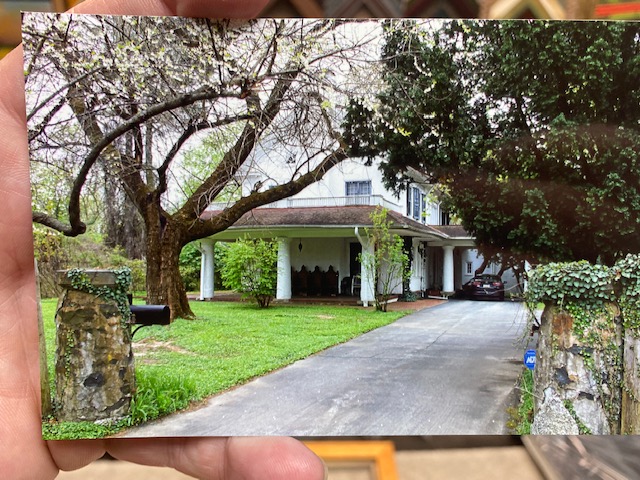
Just across the street on North Lane was the residence of Frank Sutcliffe, not only was Sutcliffe the President of the John Wood Manufacturing Company but was also the head of a reality firm that developed the better portion of the upper avenues of Conshohocken.
The “Kingraicie” property still stands today, there are two entrances to the property, one off Righter Street and the other off North Lane. There are two stone round columns greeting visitors at both of the driveway entrances, all four towers have the word “Kingraicie” cut into the top of the stone pillars.
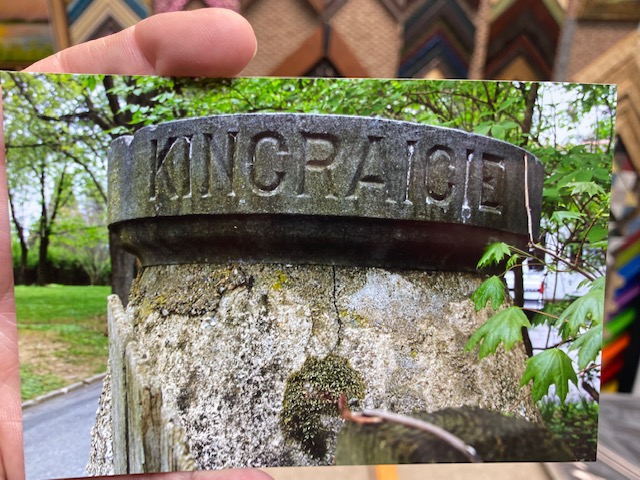
In 1914 Miss Mallen took a job with the Philadelphia Phillies organization serving first as secretary to the late president, William F. Baker and later as secretary of the club. While working for the Phillies in 1925, Mae was introduced to and fell in love with Gerald Nugent. Mr. Nugent was a Philadelphia native who graduated from Northeast High school, where he excelled at football and baseball. Upon graduation Nugent became a leather goods merchant before joining the service where he became a war hero earning two citations for bravery during World War One.
Through Mallen, Nugent was introduced to longtime Phillies owner William Baker, who was so impressed with Nugent’s baseball knowledge that he hired Nugent in 1925. Nugent rose fast in the organization, becoming business manager in 1926 and a board member in 1928. Among other things Nugent was known for spotting obscure talent.
It was Nugent who scouted and signed Pinky Whitney in 1928, Pinky was a Texas boy who played 3rd base, in 1928 Pinky batted 301, in 1929 he hit 327 and in 1930, 342 and so-on, Pinky passed away with very little fan-fair in 1987. Nugent was also impressed with a young ball player named Dolph Camilli who he brought into the Phillies organization. Dolph was with the Phillies from 1934-1937 and had a couple of outstanding years. Claude Passeau was brought to Philadelphia by Nugent from 1936-1939 and had three very good seasons with the Phillies although he will be remembered for giving up the game winning home run in the 1941 All Star Game to Ted Williams, Passeau was a member of the Chicago Cubs at the time. Perhaps Nugent’s biggest addition to the PHillies was Hall of Famer Chuck Klein, in a 16-year career he batted 320 with 300 home runs.
In 1933 Chuck Klein was having an MVP type of season when he traveled to Conshohocken to help umpire a game at what was known as the Wood Athletic Field located at Eleventh Avenue and Harry Street. (Known as the Conshohocken “A” Field today) On July 28, 1933, Klein showed up for an evening game, (He played a game earlier in the day) to umpire a game between the Baptist Blackbirds of Conshohocken and St. Joseph’s Nine of Philadelphia. The Baptist team featured players like Bob Irwin, Earl and Elmer Neil, Ralph Yocum, Sooky Sultzbach and Whitey Mellor just to name a few of the locals.
I’m sure Phillies President and Conshohocken resident Gerald Nugent had a bit of influence in bringing Klein to Conshohocken.
On a beautiful spring Saturday morning, April 25, 1925 Mae and Gerald were married in a beautiful ceremony fit for a princess held at St. Matthew’s Church located at Third Avenue and Fayette Street. The wedding was truly a high-society event. I will attempt to paint you a picture of the Main-line style event taken from the Conshohocken Recorder newspaper:
“High Nuptial mass was celebrated by Rev. Dr. Philip Gallagher, pastor of St. Matthew’s, who also performed the marriage ceremony. The Sanctuary was massed with palms and ferns, while the main altar was adorned with lilies and smilax entwined the altar railing. The main aisle of the church was lined on either side with twelve tall white standards filled with calla lilies and yellow snapdragons. The pews for the families of the couple were designated with huge bouquet of calla lilies and white velvet cord marked the pews of the invited guest. A red tinted carpet was laid from the altar rail to the church door from where crimson velvet carpet reached to the street to the striped canopy which had been erected from the curb to the church door.”
“The bride was lovely in a gown of white chiffon and princess lace with an over dress of white French satin elaborately beaded with pearls and rhinestones. A long court train fell from her shoulders. Her tulle veil was made in Russian style with a coronet of pearls and rhinestones fraped in fan effect with real lace and orange blossoms adorned her white satin slippers. She carried a hand painted white satin prayer book, the gift of her sister M. Alice, of the order of St. Joseph, a shower of tiny white satin ribbons and lilies of the valley falling from it effectively.”
An informal reception was held at “Kingraicie,” the brides home immediately following the ceremony where a wedding breakfast was served. Mr. and Mrs. Nugent departed later in the day for a wedding trip to Canada. Upon their return they resided at their newly purchased home at Fourteenth Avenue and Fayette Street formerly the Mauch property known as “Dlareg” where they had made extensive alternations.

The Nugent’s settled-in at 14th Avenue and Fayette Street where they soon had a son, Gerald Jr., born in 1928. Mr. Nugent rose fast in the Phillies organization becoming the clubs Business Manager in 1926 and a Board-Member by the time his son was born in 1928.

The Phillies owner William Baker died in 1930, leaving 700 of his shares in the Phillies to his widow and 500 shares to Mae Nugent. He was succeeded as team president by Charlie Ruch, who left most day-to-day operations in Nugent’s hands, by 1931 Mae Nugent was elected Treasurer of the Phillies. She was the first female not only to hold an executive position but held two executive positions being Treasurer and Assistant Secretary. A year later, she, along with her husband would own the entire club.
Ruch retired on the advice of his doctor in 1932, and Nugent was elected team president with the support of Baker’s widow. Baker’s widow died in 1932, leaving her shares of the Phillies to Mae Nugent, combined with his own stock, Gerald now effectively had 51 percent controlling interest in the Phillies. Mae Nugent became a team vice president, the first female senior executive in the National League.

Nugent had inherited a team that had risen to fourth place in 1932 with a 78-76 record, the only time that the Phillies finished with a winning record between 1918 and 1948. However, even with his income from his other businesses, he did not have the financial means to build on that success. He was forced to trade what little talent the team had to make ends meet, and had to use some creative financial methods to be able to field a team at all.

While the cash from the trades and sales helped the Phillies stay in business, they didn’t help the on-field product. Nugent’s tenure saw four of the seven worst seasons in franchise history. This included five consecutive seasons in which they finished dead last in the National League while losing 100 games or more.

One notable step Nugent took, in the middle of the 1938 season, was to abandon the Baker Bowl, the club’s home field since 1885. He had tried several times over the years to get out of his lease with the estate of Charles Webb Murphy, and only succeeded when he threatened to go to court. Nugent agreed to pay the Murphy estate to “suspend” the lease for five years, clearing the way for the Phillies to move five blocks west as tenants of the American League Philadelphia Athletics at Shibe Park. (Later named Connie Mack Stadium) Even after the move, there were times when the crowds could be counted in the hundreds.
In June of 1938 because of a series of alleged threats to kidnap Gerald Nugent Jr., 10-year-old son of the Phillies executives and owners, the Federal Bureau of Investigation got involved in the case. A suspect named Edward Hayman, a 42-year-old Cedar Heights man was clearly in the sights of the FBI when he was picked up for a burglary at the home of Pastor of St. Mark’s Church. Hayman was a former professional baseball player, known locally as “Eddie the Lather,” who was a member of Connie Mack’s Memphis nine about 1915, having previously played with Berwyn (1913) and in the Blue Ridge League (1914). Many of the local old-time ballplayers recalled playing with Eddie the Lather stating he was a fine ballplayer.
The first of many kidnap threats came in the form of a note which was received on January 17, 1938, with several threating notes to follow. The FBI put security on the Nugent family around the clock including guards on Gerald Jr. at his school as well as added security that could be seen in the rear of St. Matthew’s Church every Sunday. In June of 1938 after receiving several notes a phone call was placed to the Nugent residence stating “You can put all the detectives you want on guard. But if it takes six months or a year, I’ll get the boy.” The voice on the phone also stated that the money demands would need to be met or “I’ll kill the boy or Mrs. Nugent.” Other threating phone calls were made to Nugent in the office of the Phillies in the Packard Building at 15th and Chestnut Streets.
On July 19, 1938 Edward Hayman was caught in the kitchen of the Nugent’s residence at 4:45 in the morning. It was determined that Hayman entered the home only to secure some food. In the end Hayman was sentenced to prison but only for a number of robberies including four other robberies at the Nugent house. It was later determined by the FBI that Hayman was not the writer of the kidnapping notes. While investigating another kidnapping nearby it was determined that a handwriting sample matched the Nugent’s notes as well as a kidnapping note sent to Albert A. Garthwaite, who was the vice-president and general manager of Lee Tire and Rubber Company, threating to kidnap one of his three daughters.
By September 1938 the FBI captured the alleged writer of the kidnap threat notes to Nugent and Garthwaite whose homes were situated a short distance apart. (By this time Garthwaite was living in the former Mallen home on North Lane where Mae grew-up) John Ferdinand Morman, a 39-year-old Philadelphia private detective, was believed to be the writer of the kidnap threat communications to both Nugent and Garthwaite. He was being held under $25,000 bail on charges of sending extortion notes to five prominent men. About 100 letters were believed to have been written by him over a five-year period.
Meanwhile, Nugent struggled to keep the organization financially above water. As stated earlier the Phillies only had one winning season from 1918-1948. Nugent finally reached the end of his rope in 1942. A year after posting a 43-111 record, the worst in franchise history, the Phillies needed an advance from the league just to be able to go to spring training. The team shortened it name to the “Phils” because the Bayuk Cigar Company objected to the baseball team sharing the name of its Phillies Cigars. The name change wasn’t enough to reverse the Phils fortunes and they finished the 1942 season with a 42-109 record.
From 1938-1942 the Phillies had a well-respected manager in John “Hans” Lobert. Hans played for a number of teams during his playing days for 14 seasons from 1903-1917 including a stint with the Phillies. Throughout his career Hans was known as one of the fastest players in the game. He once raced a racehorse around the bases before a game. Lobert became the first Reds player to steal 2nd base, 3rd base, and home plate in the same inning. In 1911 he led the Phillies team with 40 stolen bases. In 1913, Hans won the 100-yard dash on the Polo Grounds against Jim Thorpe. At 26 years old, he was the top player in almost every offensive category for the Reds.
By the end of the 1942 season, Nugent was over $350,000 in debt, and was two years behind in rent to the A’s. He was also feeling pressure from his fellow National League owners; even after the move to Shibe Park, the Phils’ attendance figures were to meager for visiting teams to meet their expenses. Realizing that there was no way he could operate the team in 1943, he reached an agreement in principle that February to sell the team to Bill Veeck, who planned to bring in Negro League stars in an effort to turn the moribund franchise around. However, when Baseball Commissioner Kenesaw Mountain Landis, an intractable opponent of integration, got wind of it, he pressured National League President Ford Frick to quash the deal and take over the team.
A week later, the league sold the Phillies to lumber broker William D. Cox. For the first time in decades, the Phillies had an owner who was not only committed to building a winner, but wasn’t afraid to spend the money it took to do so. Things looked great for the Phillies in 1943 as they rose out of the cellar for the first time in five years and he fans responded as attendance rose for the first time in nearly 30 years. However, Cox was a very hands-on owner. When his manager, Bucky Harris, objected to Cox’s interference, Cox fired him. Out of revenge, Harris dropped a bombshell to the Philadelphia press in his hotel room, he had evidence that Cox was placing bets on his own team. After an investigation, Cox admitted to making “sentimental” bets on the Phillies, but didn’t know it was against the rules. Cox was stripped of his ownership and banned from baseball for life.
Once Nugent sold the Phillies, he went back to what he was experienced in as a young man, he took a job as a Philadelphia department store executive. However, after a four-year absence from the sport of baseball where he was still regarded as a shrewd baseball man having developed many valuable players over the years but lack of operating capital made it necessary to sell many of the stars.
Nugent accepted a job as the president of the Interstate Baseball League. The Interstate League played in the Middle Atlantic States from 1939-1952, and was one of the few mid-level minor leagues to operate continuously during the World War II period. The circuit was a Class B minor league and typically had about ten teams in the circuit in four different states.
Mae de Sales Mallon Nugent passed away on April 26, 1966 at the age of 73. She was living at the Cambridge Apartments in Philadelphia at the time and died in Eugenia Memorial Hospital, Whitemarsh. She rose to heights that no woman could imagine back in the 1930’s and 1940’s. She was a ground-breaker in the world of sports and business. She was highly respected by every executive at any level in the world of sports. When she passed, she was survived by her son Gerald Jr., and her husband Gerald Sr.
Gerald P. Nugent Sr., husband of Mae and father of Gerald Jr. passed away in the fall of 1970. He rose to great heights in the baseball world.
Gerald Nugent was a fair baseball player in high school but never played pro or semi-pro baseball of any kind, but he would often boast about the fact that he batted 1,000 against the great Walter Johnson.
Walter Johnson was known as the “Big Train” from 1907-1927 as he posted 417 victories in his 21-year career pitching for the Washington Senators. Walter held the all-time strikeout record for 56 years, his 110 complete game shutouts still ranks number one and his 531 complete games ranks fourth all time. It should be noted that Walter was one of the first five players to be inducted in the Baseball Hall of Fame when it opened back in 1936.
So, when I read that Nugent would often boast about his 1,000-batting average against Johnson I couldn’t help but researching the matter just a bit further.
Well, it turns out that Nugent was in war training at Camp Hancock at Augusta Ga. When the Big Train pitched against the soldiers. So, Nugent stepped up to the plate, starred down Johnson and laid down a perfect bunt and beat-it-out for a base-hit. It was the only time Nugent ever faced Johnson, no-matter the circumstances it must have been something to face the Big Train even once, and lay-down a base hit for a perfect batting average off Johnson, one of the greatest pitchers of all-time.
Although the couple were technically Whitemarsh residents, they carried the Conshohocken name with them throughout the country.
Years ago, back when I first took an interest in Conshohocken’s history, Doctor Joseph Leary, who passed along a lot of the borough’s history to me, well, I remember talking to him following one of his history slide shows. (It was back in 1982, he gave a history slide-show at the Number 2 Firehouse on a cold February night) He posted an early post-card picture of a house located at 14th Avenue and Fayette Street and stated that the one-time owner of the Philadelphia Phillies lived in the house they called “Diareg.” (That postcard photograph appears above)
This statement came as a surprise to me and I remember going up to “Doc” after the program and asking him just “what the hell would the owner of the Philadelphia Phillies be doing living in Conshohocken.” Doc’s answer was quick and simple, he said, “Why wouldn’t he live in Conshohocken!) I walked away with a whole different perception of Conshohocken that night. It was a statement that might have inspired me to learn the history of this great town we all live-in.
I’m not sure if I ever thanked Doc for his insight, so here’s to you Doc, I’ll be sure to buy you one someday when I join you.

Writer’s Note: A number of paragraphs in the above article were taken word for word from a couple of different web-sites pertaining to the Nugent’s and the Philadelphia Phillies. Also, a good portion of information on the Nugent’s came from assorted articles from the Conshohocken Recorder newspaper.
Photographs above include:
Gerald Nugent as a soldier in World War I
Two photos of the former Nugent House: A postcard photo from the turn of last century of the property at 14th Avenue and Fayette Street, presumably when the house was owned by the Mauch family. The second photo shows the former Nugent house as it looks today.
The former home of Mae Mallen’s parents where Mae grew up. The property known as “Kingraicie” located at North Lane and Righter Street was where Albert A. Garthwaite lived for a number of years. The house still stands today.
The Nugent family photo shows Gerald Jr. in the center, his mother Mae Mallen Nugent Secretary and Treasurer on the left and Gerald Sr., President of the Philadelphia Phillies on the right. The family was threatened by kidnappers that unless they pay the extortionists’ demands, young Gerald would be kidnapped and never seen again. This photograph was taken on May 23, 1938 at the train station as the family was on their way to the Phillies spring training camp in Winter Haven Florida.
A photograph taken in November of 1938 of Connie Mack and Gerald Nugent
Gerald Nugent and Connie Mack were surrounded by Phillies and “A’s” officials as contracts were signed for the Phillies to play their home games at Shibe Park, vacating the old Baker Bowl after playing Phillies games there for 51 years.
Gerald Nugent, center was seen at the owners meeting at the winter of 1943 before Nugent sold the team. To his left was Branch Rickey owner of the Brooklyn Dodgers and to his right was Jimmy Gallagher owner of the Chicago Cubs.
Phillies 1942 team photo, the final season Gerald Nugent owned the team. The team posted a record of 42-109, finishing 62 games out of first place. Notice the name “Phils” on their jerseys as the team was forced to shorten the name from “Phillies” due to a law-suite from a cigar company.

